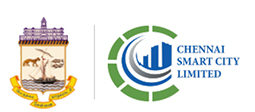Elanthanur Pond
Elanthanur Pond has been chosen for restoration by CMWSSB as part of the Sustainable Water Mission. This pond is located in Division 16 of Zone 2 and is on VinayagarKoil Street, Elanthanoor. It is located to the North of the road. The pond is irregular in shape. The pond is filled with waste water during the time of survey. The entire bund and part of the water spread is also encroached. The pond is dumped with solid waste; sullage and sewage from the surrounding residences is diverted into the pond. Infact, the encroachment had been so intense such that the bund could not be traced at all. As of now it looks like a depression filled with filthy material. No inlet or outlet could be traced. The entire water spread is infested with water hyacinth. The pond had unfortunately become a nuisance structure for the community as it became a place for mosquito breeding and emanated foul smell. Now the pond is fully restored under the Chennai Smart City project funds.
AREA:1011.715 Sq.mtrs ZONE: 2 DIVISION:17
This pond is located in Division 16 of Zone 2 and is on Vinayagar Koil Street, Elanthanoor. It is located to the North of the road. The pond is located at North Latitude 1311'24.62" and East Longitude 8016'18.50"
The pond is roughly rectangular in shape. It almost fully fenced and provided with a gate. There is no inlet, outlet or revetment provided. The bund is eroded. Minor amount of solid and liquid waste dumping and diversion is happening in the pond. The pond can be easily renovated and restored. Shallow borewells of 20m to 25m depth are the common groundwater extraction structures in the area. The Total Dissolved Solids of the borewell water varies between 600 to 1500 mg/lt. The quality deteriorates with increase in depth. Hence restoring the pond would help in sustaining the water level in the surrounding areas. Based on the Total Station Survey output, it is inferred that the total area of the pond is 6822.31 sq.m and the total length of the bund is 370.09m. The average depth of the pond is about 2.3m.
The imagery extracted from google earth on 21.03.2016 and 01.06.2002 is presented below and no major change could be detected.
Google Image of the pond as on 15.06.2010 (LEFT) and 24.07.2015 (RIGHT)
There has been substantial encroachment in the southern, Noth eastern and western portion of the pond. As there is no proper approach to the pond and totally dumped with filthy material Total Station Survey could not be carried out in this pond. Hence the area calculation is being done using google earth.
Based on the field observations and inferences, followed by the data analysis, following were the list of activities proposed for renovating the pond.
-
The community need to be sensitized first on the importance of water bodies and their role in sustaining the groundwater sources in the area.
-
Further encroachment should be checked first by erecting a compound wall around the water body.
-
Temporary and semi permanent structures erected on the bund and water body should be removed and cleared.
-
Dumping of solid waste should be stopped with immediate effect with a sigh board warning on the polluters / violators with serious consequences.
-
Sullage and sewage diversion should be stopped. At this stage this would be a tough task to perform as it would lead to local unrest in terms of disposing the sullage water. Hence the source from where the sullage emanates should be addressed by introducing soak pits at the house hold level.
-
The existing water should be dewatered and disposed.
-
The pond should be desilted and water hyacinth removed.
-
The bushes all around the bund should be removed.
After completing the above tasks it is better to retain the water body as such for 1 year, after which the water body can be converted into a water harvesting and recharge system. Introducing recharge system at this stage would lead to the pollution of groundwater and hence it is not recommended. Bund formation, provision of revetment and steps can be considered at later stage as the pond cannot be brought into immediate use in its present condition.



